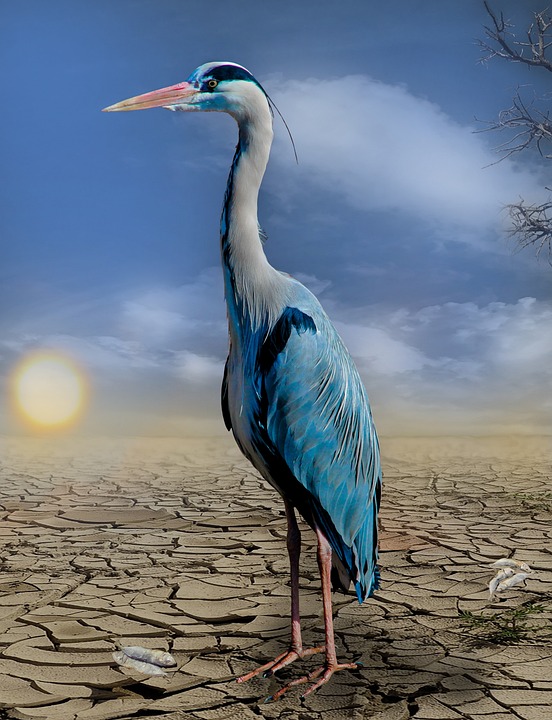Which Country Has the Most Diverse Climate?
Climate diversity refers to the range of different climates that can exist within a specific area or country. It encompasses variations in temperature, precipitation, and ecosystems, significantly influencing the geographical and ecological characteristics of a region. Understanding climate diversity is crucial for comprehending how ecosystems function and how they adapt to environmental changes.
Countries with notable climate diversity often feature a mix of tropical, arid, temperate, and polar climates, each supporting distinct ecosystems. This diversity not only enhances biodiversity but also affects human activities such as agriculture, tourism, and urban planning.
What Defines Climate Diversity?
Climate diversity is characterized by:
– Variations in Temperature and Precipitation: Different regions experience varying temperatures and rainfall patterns, leading to distinct climate types.
– Ecosystem Variability: Diverse climates support a wide range of ecosystems, from rainforests to deserts.
– Common Climate Types: These include tropical, arid (desert), temperate, polar, and continental climates.
– Geographical Influences: Factors such as latitude, altitude, proximity to oceans, and topography play significant roles in creating climate variation. For example, mountain ranges can create rain shadows that lead to arid conditions on one side while promoting lush vegetation on the other.
Countries with the Most Diverse Climates
Several countries stand out for their remarkable climate diversity:
– United States: The U.S. showcases a vast array of climates ranging from the arctic conditions of Alaska to the tropical climate of Hawaii. It features deserts (e.g., Mojave), temperate forests (e.g., Pacific Northwest), and subtropical regions (e.g., Florida) due to its extensive geographic variation.
– China: Home to diverse climates including arid deserts (Gobi), temperate plains (North China Plain), tropical rainforests (Hainan), and cold plateaus (Tibet). The country’s vast size and varied topography contribute to its climatic variety.
– Australia: Australia spans several climate zones from tropical rainforests in the north to arid deserts in the center and temperate regions in the south. This diversity supports unique ecosystems like the Great Barrier Reef and various desert habitats.
– Brazil: Brazil features a wide range of climates from the Amazon rainforest’s humid tropical climate to the dry conditions of its northeastern interior. The country’s geography includes mountains, plateaus, and extensive coastlines that influence its climatic diversity.
– India: India experiences significant climate diversity driven by monsoon patterns, arid deserts (Thar), temperate regions in the north (Himalayas), and tropical coastal areas. This variety supports a rich tapestry of flora and fauna.
Factors That Lead to Climate Diversity
Several geographical features contribute to climate diversity:
– Mountain Ranges: Such as the Himalayas and Rockies create varied climates through elevation changes and rain shadow effects.
– Coastlines: Proximity to oceans moderates temperatures and influences weather patterns through ocean currents.
– Altitude Variations: Higher elevations typically experience cooler temperatures and different precipitation patterns compared to lower areas.
– Weather Patterns: Ocean currents (like El Niño) and wind systems (monsoons) play crucial roles in shaping regional climates.
Impact of Diverse Climates on Flora and Fauna
The presence of diverse climates within a single country fosters various ecosystems:
– Different species thrive in distinct climatic zones, leading to unique biodiversity hotspots such as the Amazon Rainforest in Brazil or the coral reefs off Australia’s coast.
– Climate diversity supports a wide array of plant species adapted to specific environmental conditions, enhancing overall biodiversity.
Human Adaptation to Diverse Climates
Human populations adapt their lifestyles according to climatic conditions:
– Clothing: People wear different types of clothing suited for hot or cold climates.
– Architecture: Building designs vary significantly; for instance, homes in tropical areas may have open structures for ventilation while those in colder regions are insulated.
– Agriculture: Farming practices are tailored to local climates; crops grown in tropical regions differ from those cultivated in temperate or arid zones.
Challenges of Managing Climate Diversity
Managing diverse climates presents several challenges:
– Environmental Protection: Ensuring conservation efforts are effective across multiple climate zones can be complex.
– Climate Change Impacts: Diverse climates may experience varying effects from climate change, complicating adaptation strategies.
– Resource Management: Balancing water resources and agricultural practices across different climatic regions requires careful planning.
FAQs
Which country has the most climate zones?
The United States is often cited as having one of the most diverse arrays of climate zones due to its vast geographic expanse that includes deserts, mountains, forests, and coastal areas. Other contenders include China and Brazil which also exhibit significant climatic variety due to their size and geographical features.
How does climate diversity affect tourism?
Countries with diverse climates attract tourists for various activities ranging from skiing in cold regions to beach vacations in tropical locales. This variety enhances tourism opportunities by catering to different interests throughout the year.
Does climate diversity lead to more extreme weather events?
Yes, diverse climates can result in various natural disasters such as floods in tropical areas or droughts in arid regions. The interplay between different climatic systems can exacerbate weather extremes.
How does climate diversity impact a country’s agriculture?
Agricultural practices vary widely based on local climates; for example, rice is commonly grown in monsoon regions while wheat is cultivated in temperate zones. This adaptability allows countries with diverse climates to produce a wide variety of crops.
Conclusion
Countries like the United States, China, Australia, Brazil, and India exemplify remarkable climate diversity due to their varied geographical features. This diversity not only enriches ecosystems but also poses unique challenges for human adaptation and environmental management. Understanding these complexities highlights the beauty and intricacies of our planet’s climatic landscape.

Kyle Whyte is a notable scholar and professor at the University of Michigan, holding positions such as the George Willis Pack Professor in the School for Environment and Sustainability and Professor of Philosophy. Specializing in environmental justice, his work critically examines climate policy and Indigenous peoples’ ethics, emphasizing the nexus between cooperative scientific endeavors and Indigenous justice. As an enrolled Citizen Potawatomi Nation member, he brings a vital perspective to his roles as a U.S. Science Envoy and member of the White House Environmental Justice Advisory Council. His influential research is supported by various prestigious organizations including the National Science Foundation, and disseminated through publications in high-impact journals. Kyle actively contributes to global Indigenous research methodologies and education, with affiliations to numerous institutes and societies dedicated to traditional knowledge and sustainability. Recognized for his academic and community engagement, Kyle has earned multiple awards and served in various visiting professorships. His efforts extend to leadership positions on boards and committees focused on environmental justice nationwide.
